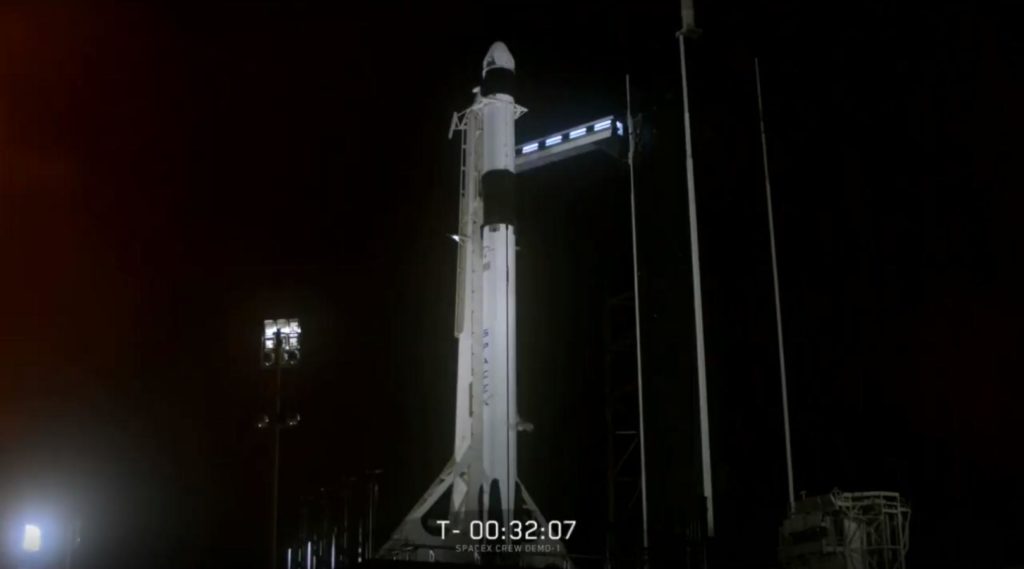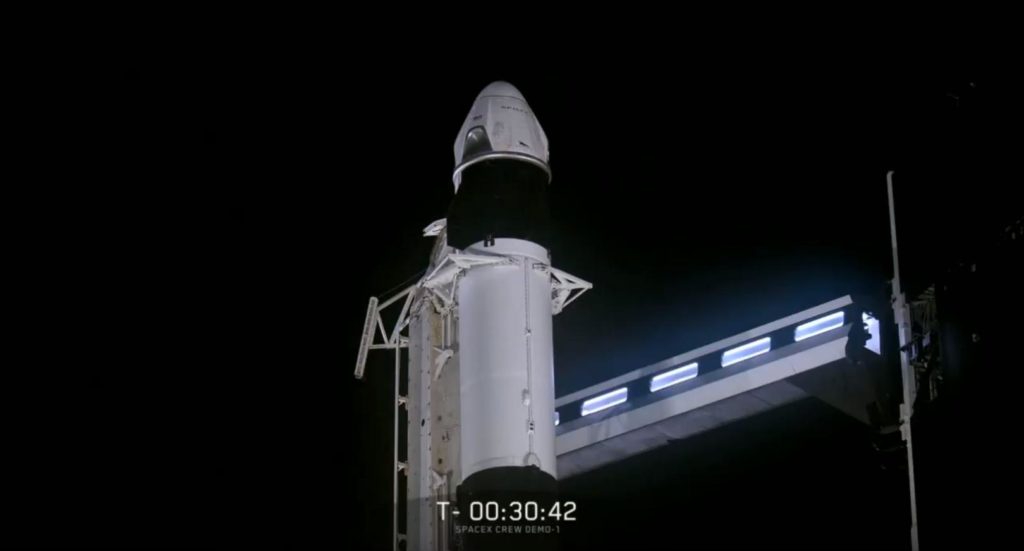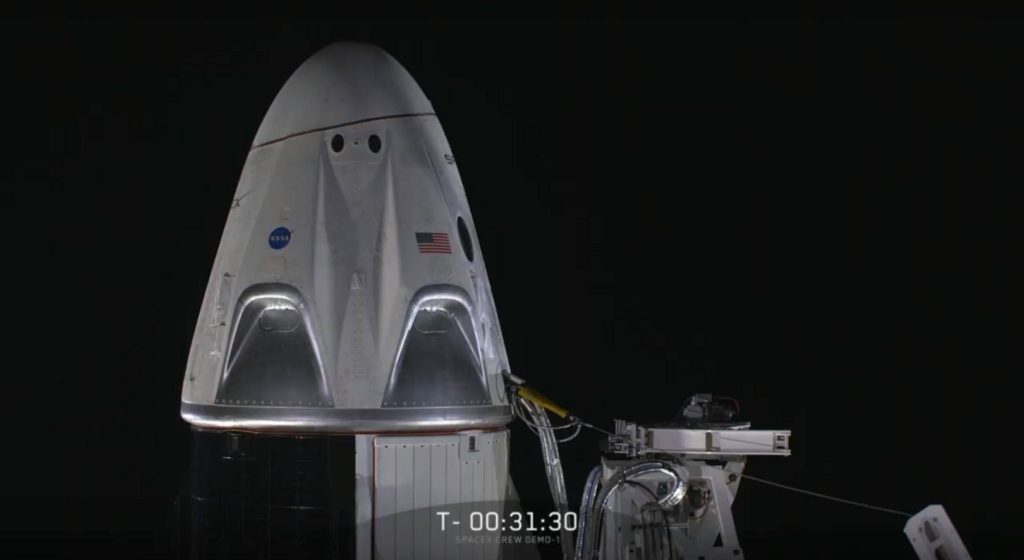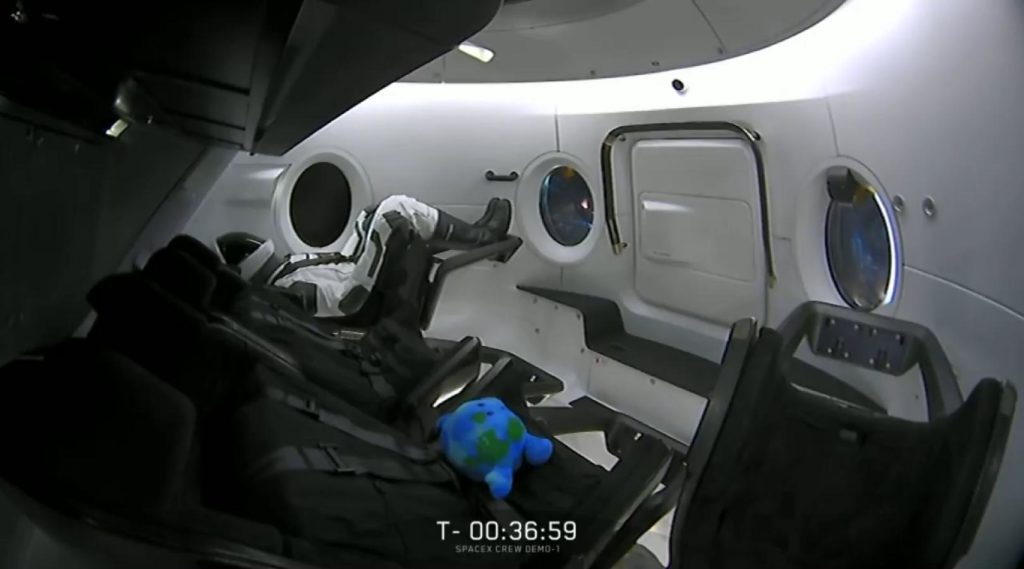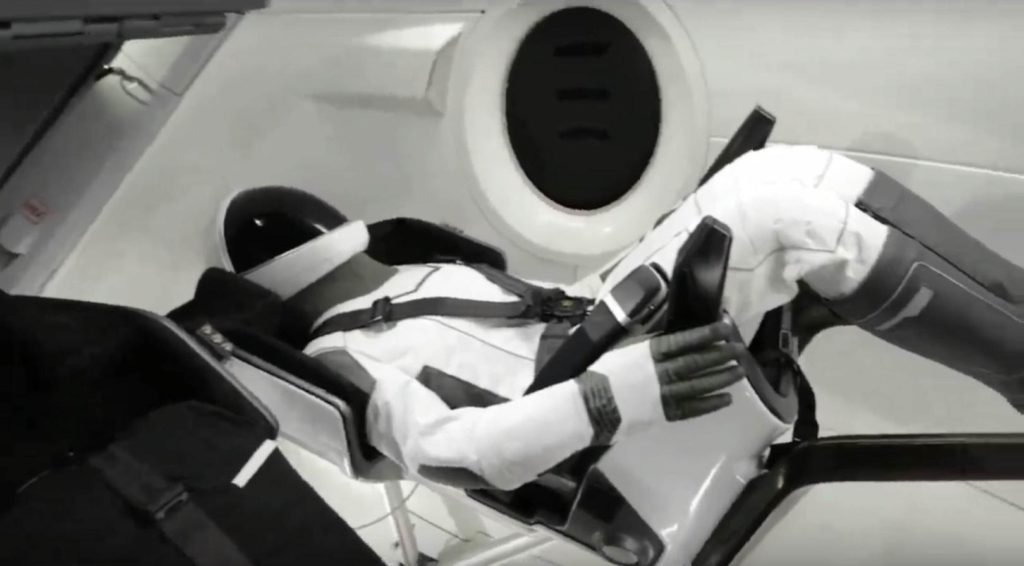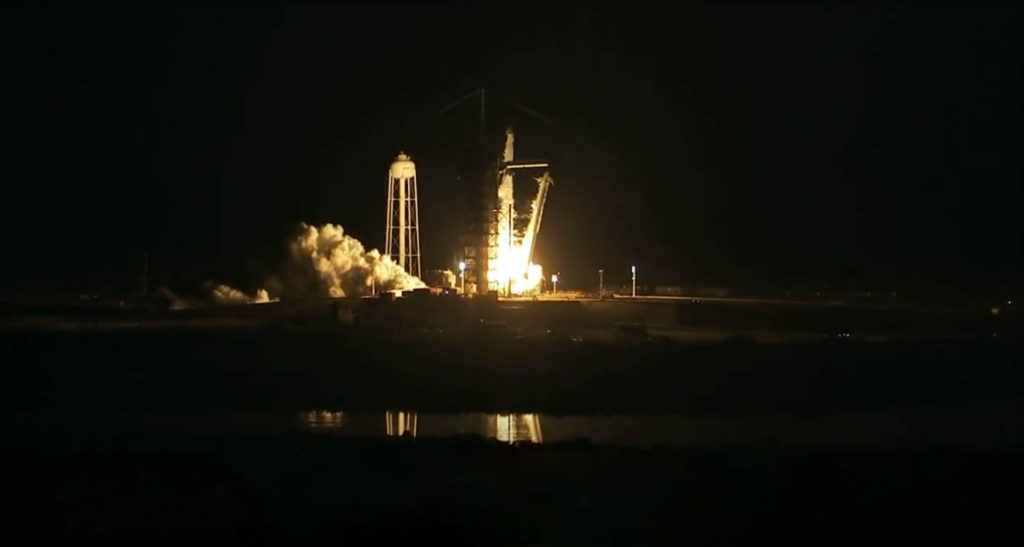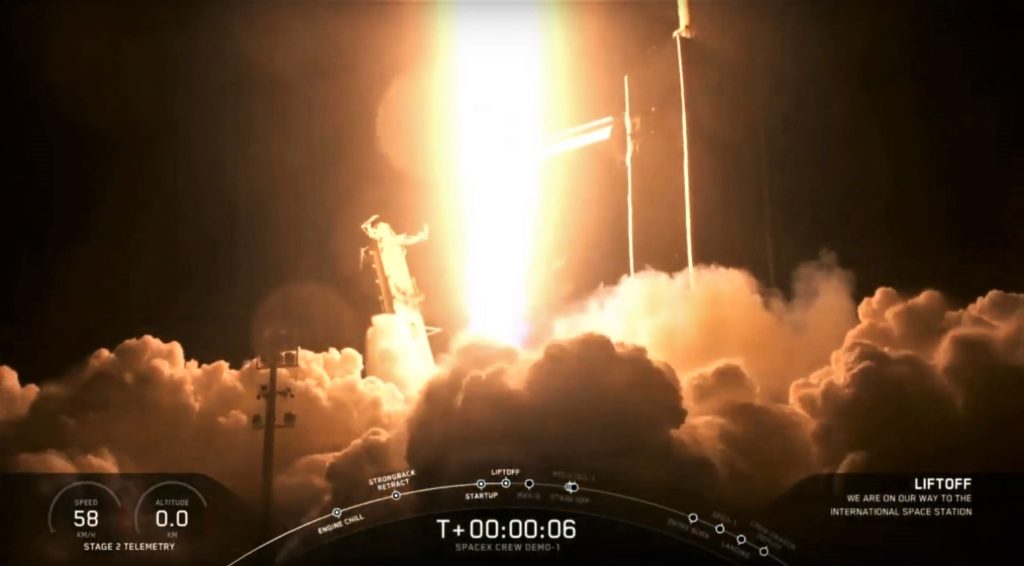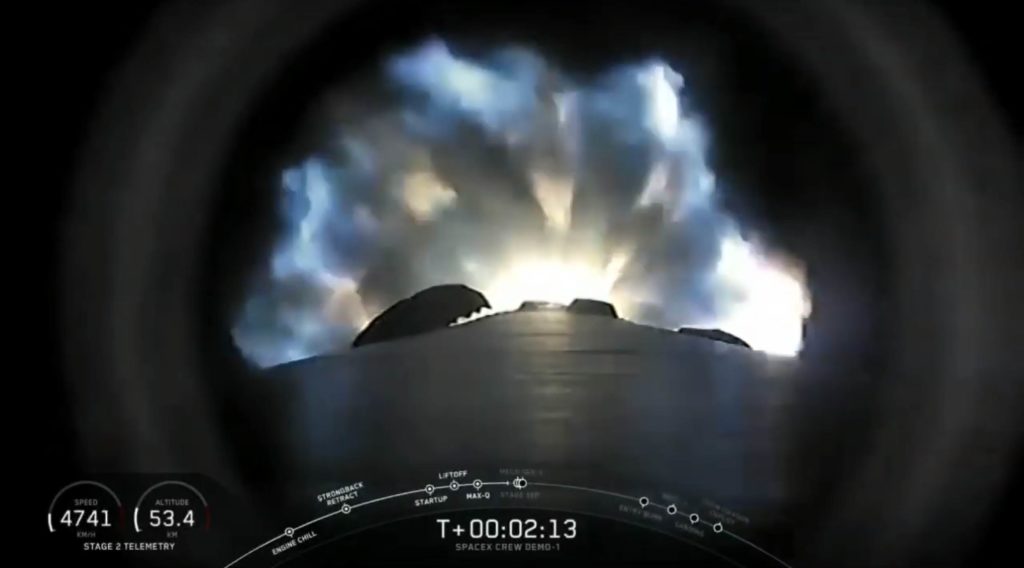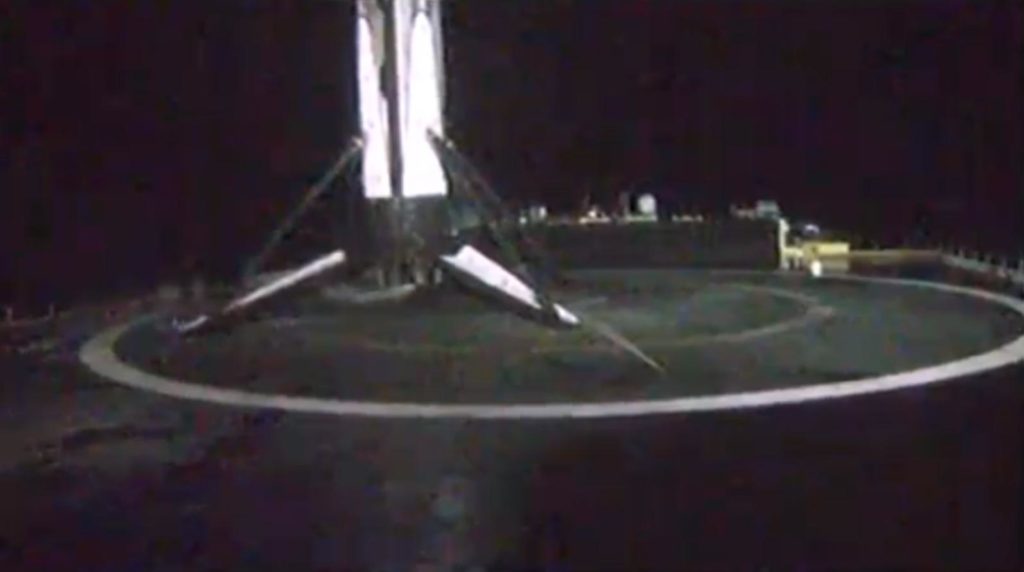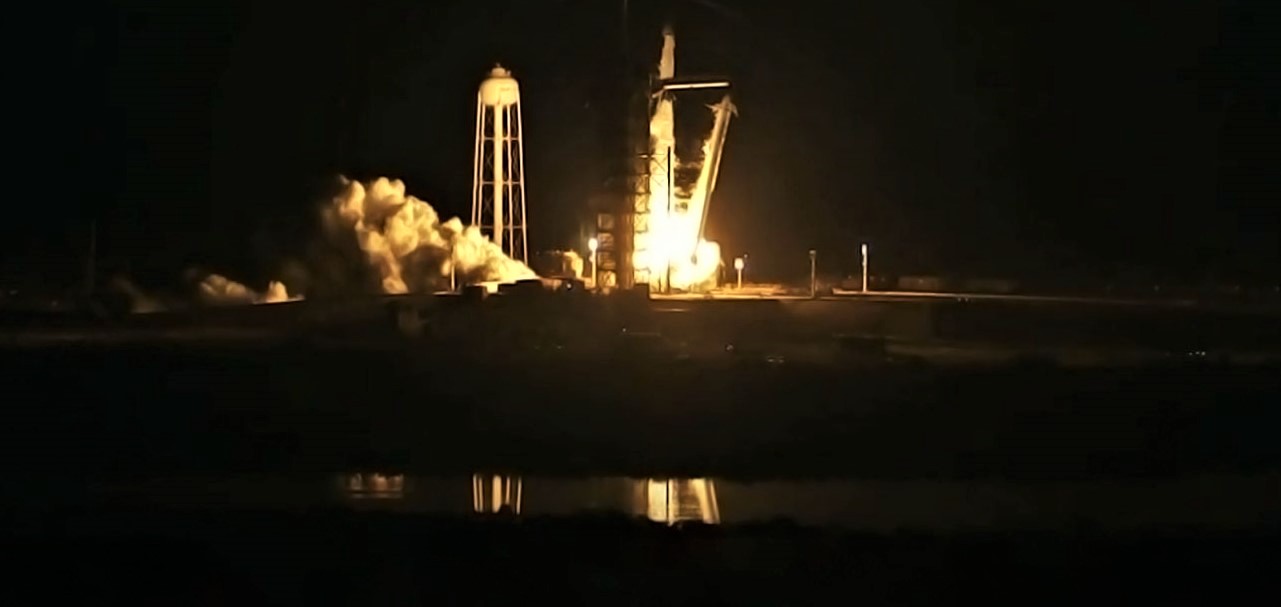

SpaceX
SpaceX’s Crew Dragon one step closer to human spaceflight after flawless launch
SpaceX has completed the first half of its critical Crew Dragon test flight, launching the brand new spacecraft into low Earth orbit (LEO) on the back of one of its workhorse Falcon 9 rockets. The rocket performed nominally, successfully sending the human-rated vehicle on its way towards the International Space Station (ISS).
Scheduled to dock with the ISS as early as 6 am EST (13:00 UTC) March 3rd, Crew Dragon will now face the real challenge of this demonstration mission, successfully operating in orbit and autonomously docking with the ISS. Along the way, SpaceX will be flight-testing a number of technologies and systems new to the company, while also providing reams of data that will help both SpaceX and NASA determine whether Crew Dragon performed as intended and is truly ready to carry astronauts into orbit.
https://twitter.com/_TomCross_/status/1101764440800878593
While this successful launch is a critical milestone for DM-1, Crew Dragon, SpaceX, and NASA, it’s hard to say there is anything particularly shocking about its successful completion. Including this launch, SpaceX has now successfully launched Falcon 9 42 times in a row since January 2017, including seven orbital launches and ISS missions with Cargo Dragon, a heavily proven spacecraft with 16 successful missions since its 2012 debut. Put simply, SpaceX has an incredibly dense volume of experience successfully launching, landing, recovering, and refurbishing orbital-class rockets and spacecraft, as well as a proven track record of success and an ability to confront and move past challenging vehicle failures.
Crew Dragon demo mission (DM-1) is set to launch early tomorrow morning, March 2, at 2:49 a.m. EST from Kennedy Space Center. What an absolutely breathtaking scene at LC-39A. #spacex #nasa #CrewDragon #falcon9 pic.twitter.com/T95wCumGzq
— Pauline Acalin (@w00ki33) March 1, 2019
Crew Dragon’s successful launch is no less of a major achievement, even if it was about as much of a known quantity as any other Falcon 9 mission. The real challenge ahead of the spacecraft is successfully demonstrating the efficacy of its design and operations in space, particularly while interacting and docking with the ISS. Prior to tomorrow morning, all SpaceX Dragons have berthed with the ISS, meaning that they effectively come up from underneath the ISS (a lower orbit), stop a few meters away, and are ‘grappled’ by a large robotic arm (known as Canadarm2) that also attaches the spacecraft to a docking port. If – at any point during the pre-berthing approach – Cargo Dragon were to lose control, the spacecraft would essentially fall back down the gravitational hill it had just climbed, a built-in abort that would nominally prevent the spacecraft from impacting the Station in most failure scenarios.
The launch of Crew Dragon demo (DM-1) as seen from the roof of NASA’s Vehicle Assembly Building. What a powerful and moving mission. Another step closer! #spacex #nasa #CrewDragon pic.twitter.com/aWIPtDcVir
— Pauline Acalin (@w00ki33) March 2, 2019
Crew Dragon, on the other hand, has been designed to dock with the ISS. Generally speaking, this means that the spacecraft will approach the Station side-on, as if it were a car accelerating faster than another car in the same ‘lane’. While there are many built-in points during the docking approach where Crew Dragon will halt all forward movement, the differing docking approach means that any loss of control or contact while on a vector towards the ISS could mean that it is unable to abort, significantly increasing the likelihood of an impact event in worst-case scenarios. While Crew Dragon is designed with extreme redundancy and fault-tolerance in mind, the stakes are definitively higher compared to Cargo Dragon.
Liftoff of Dragon 2 at 2:49am! SpaceX’s first flight of their new capsule preparing to take astronauts back to the International Space Station from American soil.
See the full launch gallery and support NASAspaceflight by subscribing to L2: https://t.co/whUFQd0FNU pic.twitter.com/TIhJxCSM8j
— Brady Kenniston (@TheFavoritist) March 2, 2019
Conscious of this fact, the new spacecraft will be tasked with completing a significant number of on-orbit maneuvers to verify nominal performance before allowing the autonomous vehicle to attempt a docking with the ISS. While that docking attempt is scheduled to occur as early as 6 am EST (13:00 UTC), live coverage – hosted by both NASA and SpaceX – will begin around 3:30 am EST (10:30 UTC) on Sunday, March 3rd. While these on-orbit webcasts can admittedly be rather dry compared to the thrill of launch, it will arguably be the most significant and mission-critical portion of Crew Dragon’s launch debut, alongside the spacecraft’s safe reentry and Atlantic Ocean landing and recovery. Follow along live at spacex.com/webcast.
Check out Teslarati’s newsletters for prompt updates, on-the-ground perspectives, and unique glimpses of SpaceX’s rocket launch and recovery processes!
News
SpaceX’s Crew-11 mission targets July 31 launch amid tight ISS schedule
The flight will lift off from Launch Complex 39A at Kennedy Space Center in Florida.

NASA and SpaceX are targeting July 31 for the launch of Crew-11, the next crewed mission to the International Space Station (ISS). The flight will lift off from Launch Complex 39A at Kennedy Space Center in Florida, using the Crew Dragon Endeavour and a Falcon 9 booster.
Crew Dragon Endeavour returns
Crew-11 will be the sixth flight for Endeavour, making it SpaceX’s most experienced crew vehicle to date. According to SpaceX’s director of Dragon mission management, Sarah Walker, Endeavour has already carried 18 astronauts representing eight countries since its first mission with NASA’s Bob Behnken and Doug Hurley in 2020, as noted in an MSN report.
“This Dragon spacecraft has successfully flown 18 crew members representing eight countries to space already, starting with (NASA astronauts) Bob (Behnken) and Doug (Hurley) in 2020, when it returned human spaceflight capabilities to the United States for the first time since the shuttle retired in July of 2011,” Walker said.
For this mission, Endeavour will debut SpaceX’s upgraded drogue 3.1 parachutes, designed to further enhance reentry safety. The parachutes are part of SpaceX’s ongoing improvements to its human-rated spacecraft, and Crew-11 will serve as their first operational test.
The Falcon 9 booster supporting this launch is core B1094, which has launched in two previous Starlink missions, as well as the private Ax-4 mission on June 25, as noted in a Space.com report.
The four-members of Crew-11 are NASA astronauts Zena Cardman and Mike Fincke, as well as Japan’s Kimiya Yui and Russia’s Oleg Platonov.
Tight launch timing
Crew-11 is slated to arrive at the ISS just as NASA coordinates a sequence of missions, including the departure of Crew-10 and the arrival of SpaceX’s CRS-33 mission. NASA’s Bill Spetch emphasized the need for careful planning amid limited launch resources, noting the importance of maintaining station altitude and resupply cadence.
“Providing multiple methods for us to maintain the station altitude is critically important as we continue to operate and get the most use out of our limited launch resources that we do have. We’re really looking forward to demonstrating that capability with (CRS-33) showing up after we get through the Crew-11 and Crew-10 handover,” Spetch stated.
News
SpaceX launches Ax-4 mission to the ISS with international crew
The SpaceX Falcon 9 launched Axiom’s Ax-4 mission to ISS. Ax-4 crew will conduct 60+ science experiments during a 14-day stay on the ISS.

SpaceX launched the Falcon 9 rocket kickstarting Axiom Space’s Ax-4 mission to the International Space Station (ISS). Axiom’s Ax-4 mission is led by a historic international crew and lifted off from Kennedy Space Center’s Launch Complex 39A at 2:31 a.m. ET on June 25, 2025.
The Ax-4 crew is set to dock with the ISS around 7 a.m. ET on Thursday, June 26, 2025. Axiom Space, a Houston-based commercial space company, coordinated the mission with SpaceX for transportation and NASA for ISS access, with support from the European Space Agency and the astronauts’ governments.
The Ax-4 mission marks a milestone in global space collaboration. The Ax-4 crew, commanded by U.S. astronaut Peggy Whitson, includes Shubhanshu Shukla from India as the pilot, alongside mission specialists Sławosz Uznański-Wiśniewski from Poland and Tibor Kapu from Hungary.
“The trip marks the return to human spaceflight for those countries — their first government-sponsored flights in more than 40 years,” Axiom noted.
Shukla’s participation aligns with India’s Gaganyaan program planned for 2027. He is the first Indian astronaut to visit the ISS since Rakesh Sharma in 1984.
Axiom’s Ax-4 mission marks SpaceX’s 18th human spaceflight. The mission employs a Crew Dragon capsule atop a Falcon 9 rocket, designed with a launch escape system and “two-fault tolerant” for enhanced safety. The Axiom mission faced a few delays due to weather, a Falcon 9 leak, and an ISS Zvezda module leak investigation by NASA and Roscosmos before the recent successful launch.
As the crew prepares to execute its scientific objectives, SpaceX’s Ax-4 mission paves the way for a new era of inclusive space research, inspiring future generations and solidifying collaborative ties in the cosmos. During the Ax-4 crew’s 14-day stay in the ISS, the astronauts will conduct nearly 60 experiments.
“We’ll be conducting research that spans biology, material, and physical sciences as well as technology demonstrations,” said Whitson. “We’ll also be engaging with students around the world, sharing our experience and inspiring the next generation of explorers.”
SpaceX’s Ax-4 mission highlights Axiom’s role in advancing commercial spaceflight and fostering international partnerships. The mission strengthens global space exploration efforts by enabling historic spaceflight returns for India, Poland, and Hungary.
News
Starlink Cellular’s T-Mobile service to grow with third-party app data
From Oct 2025, T-Satellite will enable third-party apps in dead zones! WhatsApp, X, AccuWeather + more coming soon.

Starlink Cellular’s T-Mobile service will expand with third-party app data support starting in October, enhancing connectivity in cellular dead zones.
T-Mobile’s T-Satellite, supported by Starlink, launches officially on July 23. Following its launch, T-Mobile’s Starlink Cellular service will enable data access for third-party apps like WhatsApp, X, Google, Apple, AccuWeather, and AllTrails on October 1, 2025.
T-Mobile’s Starlink Cellular is currently in free beta. T-Satellite will add MMS support for Android phones on July 23, with iPhone support to follow. MMS support allows users to send images and audio clips alongside texts. By October, T-Mobile will extend emergency texting to all mobile users with compatible phones, beyond just T-Mobile customers, building on its existing 911 texting capability. The carrier also provides developer tools to help app makers integrate their software with T-Satellite’s data service, with plans to grow the supported app list.
T-Mobile announced these updates during an event celebrating an Ookla award naming it the best U.S. phone network, a remarkable turnaround from its last-place ranking a decade ago.
“We not only dream about going from worst to best, we actually do it. We’re a good two years ahead of Verizon and AT&T, and I believe that lead is going to grow,” said T-Mobile’s Chief Operating Officer Srini Gopalan.
T-Mobile unveiled two promotions for its Starlink Cellular services to attract new subscribers. A free DoorDash DashPass membership, valued at $10/month, will be included with popular plans like Experience Beyond and Experience More, offering reduced delivery and service fees. Meanwhile, the Easy Upgrade promotion targets Verizon customers by paying off their phone balances and providing flagship devices like the iPhone 16, Galaxy S25, or Pixel 9.
T-Mobile’s collaboration with SpaceX’s Starlink Cellular leverages orbiting satellites to deliver connectivity where traditional networks fail, particularly in remote areas. Supporting third-party apps underscores T-Mobile’s commitment to enhancing user experiences through innovative partnerships. As T-Satellite’s capabilities grow, including broader app integration and emergency access, T-Mobile is poised to strengthen its lead in the U.S. wireless market.
By combining Starlink’s satellite technology with strategic promotions, T-Mobile is redefining mobile connectivity. The upcoming third-party app data support and official T-Satellite launch mark a significant step toward seamless communication, positioning T-Mobile as a trailblazer in next-generation wireless services.
-

 Elon Musk2 weeks ago
Elon Musk2 weeks agoTesla investors will be shocked by Jim Cramer’s latest assessment
-

 News2 days ago
News2 days agoTesla debuts hands-free Grok AI with update 2025.26: What you need to know
-

 Elon Musk4 days ago
Elon Musk4 days agoxAI launches Grok 4 with new $300/month SuperGrok Heavy subscription
-

 Elon Musk7 days ago
Elon Musk7 days agoElon Musk confirms Grok 4 launch on July 9 with livestream event
-

 News1 week ago
News1 week agoTesla Model 3 ranks as the safest new car in Europe for 2025, per Euro NCAP tests
-

 Elon Musk2 weeks ago
Elon Musk2 weeks agoxAI’s Memphis data center receives air permit despite community criticism
-

 News4 days ago
News4 days agoTesla begins Robotaxi certification push in Arizona: report
-

 Elon Musk2 weeks ago
Elon Musk2 weeks agoTesla scrambles after Musk sidekick exit, CEO takes over sales

